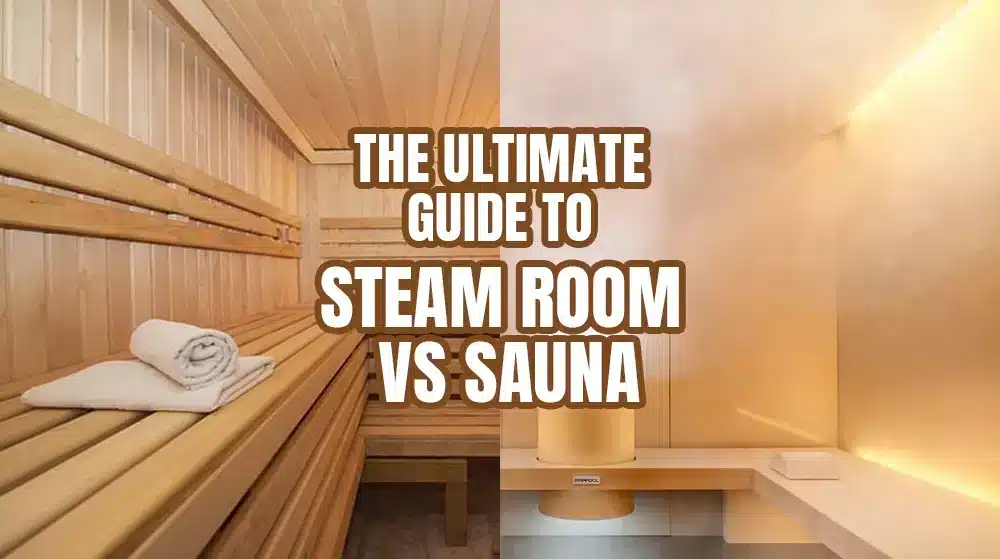Confused about sauna room steam room equipment options? This easy breakdown will help you decide.
Alright, let’s talk about getting sauna and steam room gear set up. It’s something I actually went through myself not too long ago, figuring it all out piece by piece.
Getting Started: The Idea
It started pretty simply. I’d used saunas and steam rooms at gyms and stuff, and thought, wouldn’t it be great to have that kind of relaxation at home? Or maybe for a small project I was thinking about. That kicked off the whole process. First thing was realizing, okay, this isn’t just buying a chair, there’s actual equipment involved.
Looking Into the Gear
So, I started digging around. What do you actually need? For a sauna, the big thing is the heater. Found out there are mainly electric ones and wood-burning ones. Electric seemed easier for indoor use, less fuss with chimneys and wood. Then there’s infrared, which is a different vibe altogether, heats the body directly. I mostly focused on traditional electric heaters though.

For the steam room, it’s all about the steam generator. Had to figure out sizing – too small and it’s weak steam, too big and it’s overkill, wastes energy. Found out you calculate based on the room size, materials used (tiles need more power than acrylic), that sort of thing. Looked at different brands, trying to see what people actually used and liked.
Then you have the controls. Simple dials versus fancy digital panels. Some control temperature, time, lights, maybe even connect to an app. I leaned towards something straightforward, didn’t need a spaceship command center.
Materials for the room itself are part of the equipment consideration too, even if not ‘gear’. What wood for the sauna? Cedar’s popular, smells great. Aspen, maybe basswood if you want less scent. For the steam room, it’s gotta be waterproof stuff – tiles, acrylic panels.
Making the Choices
Okay, decision time. For the sauna, I went with an electric heater. Just seemed more practical for my setup. Sized it based on the cubic footage of the space I planned. Didn’t go top-of-the-line fancy, but got one with decent reviews for reliability.
For the steam generator, I did the math for the room size, added a bit extra like the supplier suggested because I was using mostly tile. Found a generator brand that seemed like a good balance of cost and durability. Also got a basic digital control panel that mounted outside the room.

- Electric Sauna Heater (sized for room)
- Sauna Stones (gotta have those!)
- Steam Generator (sized for room + materials)
- Exterior Digital Control Panel (for steam)
- Basic Sauna Controls (usually comes with heater)
Putting It All Together
This was the hands-on part. Building the actual rooms is a whole other story, but installing the equipment itself… well, it took time.
The sauna heater needed proper wiring. Had to run a dedicated circuit, heavy gauge wire. Made sure all the clearances around the heater were right – safety first, don’t want to burn the place down. Mounting it to the wall was straightforward following the instructions. Then loading the stones in, arranging them so air flows through.
The steam generator needed plumbing – a water line in, a steam line out to the steam head inside the room, and a drain line. Also needed its own electrical circuit. Found a good spot for it, accessible but out of the way. Running the steam pipe requires care, needs to slope right so condensation drains properly. Hooking up the control panel was just plugging in a cable, basically.
Honestly, the electrical and plumbing bits were the trickiest. If you’re not comfortable with that stuff, definitely get a pro. I took my time, double-checked everything.
Firing It Up & Using It
First time turning on the sauna heater… felt good seeing it glow. Let it run for a while to burn off any manufacturing smells, aired the room out. Then tried it properly. Took a bit to get the temperature just right, fiddling with the thermostat. Found the sweet spot eventually.

The steam generator was similar. Turned it on, waited for steam. First blast is always cool to see. Adjusted the time and temp settings on the panel. Making sure the steam head dispersed steam well, not just blasting one spot.
Been using both regularly now. The electric sauna heats up reliably, maybe 30-40 minutes to get to temp. The steam room gets steamy fast, usually within 5-10 minutes. It works. It actually does the job it’s supposed to do.
Keeping Things Running
Maintenance is key. For the sauna, gotta check the stones sometimes, rearrange or replace if they crack. Keep the wood clean. For the steam generator, descaling is important, especially if you have hard water. Some have auto-flush features, which helps, but manual cleaning might be needed now and then. Just keeping an eye on things, making sure nothing sounds weird or looks off.
So yeah, that was my journey through getting sauna and steam equipment sorted. Started with an idea, did the homework, picked the gear, got my hands dirty installing it, and now enjoying the results. It wasn’t super complicated, but definitely required careful planning and execution. Worth it in the end though.
